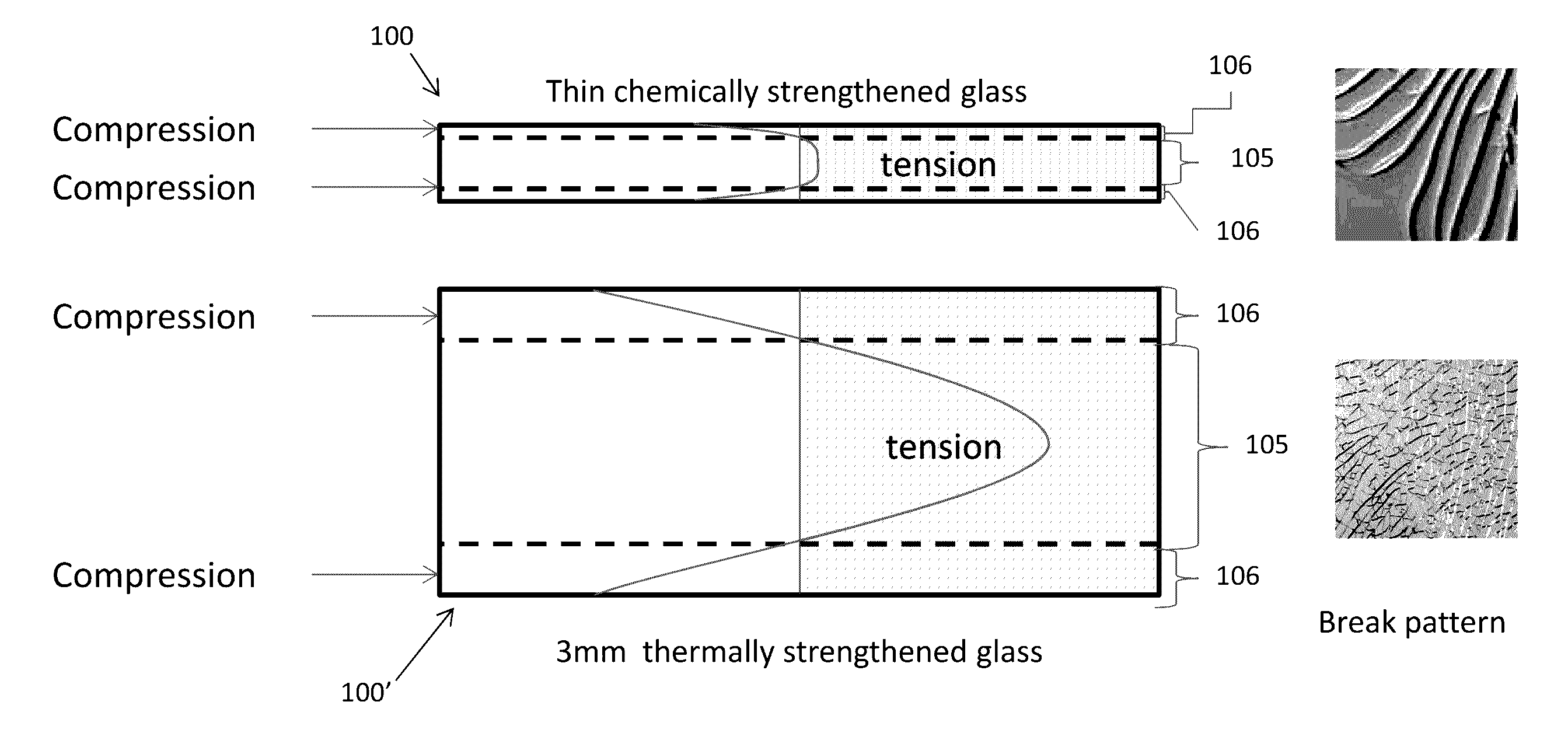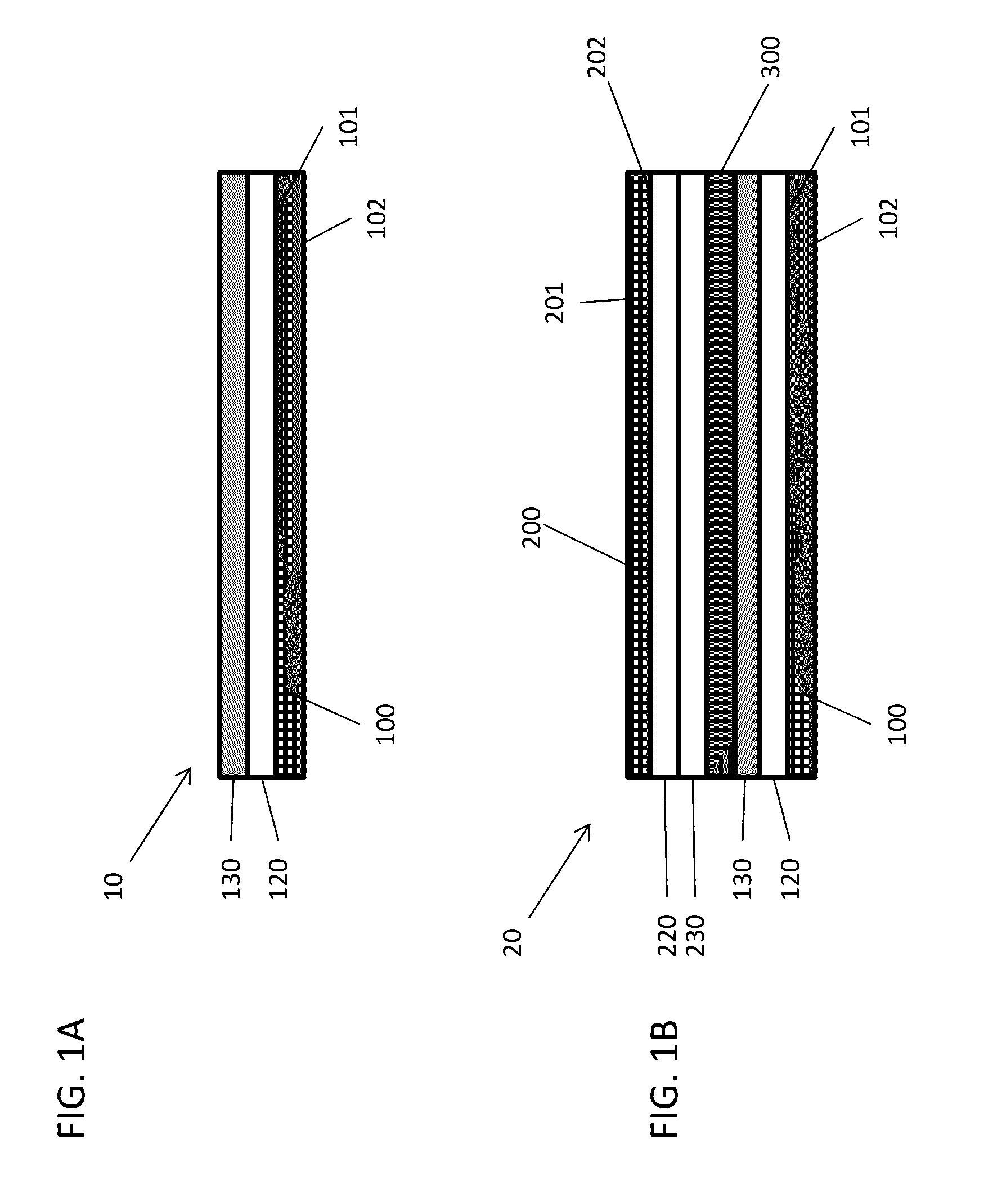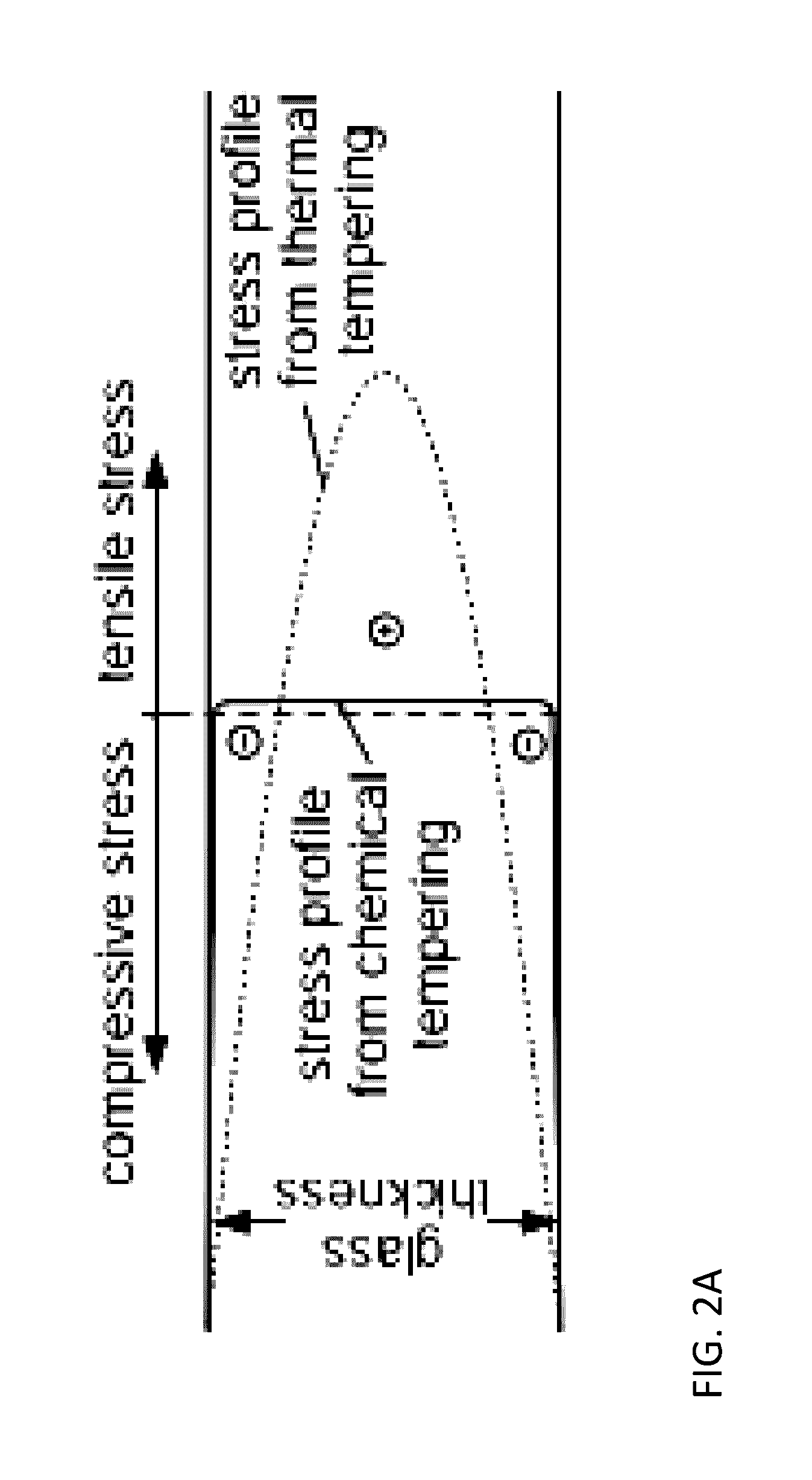Laser cutting strengthened glass
a technology of reinforced glass and laser cutting, which is applied in the direction of manufacturing tools, door/window protective devices, instruments, etc., can solve the problems of reducing the efficiency and throughput of such commercial processes, and processing multiple glass sheets or substrates can be particularly difficul
- Summary
- Abstract
- Description
- Claims
- Application Information
AI Technical Summary
Benefits of technology
Problems solved by technology
Method used
Image
Examples
example 1
[0159]A glass substrate for use in a window is first heat strengthened to reach the necessary surface stress for the final window product. In most cases a surface stress of around 65 MPa is sufficient but this can vary depending on the installation location and other factors. The glass substrate is then coated with a first layer of an electrochromic film. The first layer of the electrochromic film can be cured at a temperature of less than 300° C. Some processes do not require a cure post coating, for example sputtered electrochromic layers do not typically require a thermal treatment after deposition. In parallel, a matching counter electrode electrochromic layer is coated on another strengthened glass substrate of equal size to the first glass substrate. The counter electrode electrochromic layer may be cured or not cured.
[0160]The two coated strengthened glass substrates are then laminated together with a polymer between the two glass substrates which has the necessary ion conduc...
example 2
[0162]A soda-lime glass substrate is provided. The soda-lime glass is processed to add a transparent conducting oxide (TCO) layer during the thermal-strengthening process. The soda-lime glass undergoes a custom high temperature TCO process where the glass reaches a temperature of around 650° C. The substrate is subsequently cooled at a rate that induces a surface stress of around 60 MPa. The TCO-coated, heat-strengthened glass is then coated with an electrochromic coating and calcined at a temperature of around 300° C. for around 1 hour.
[0163]The thermally-strengthened glass substrate can then be assembled into a large device with a strengthened glass pair using a polymer ion conductor between the two pieces of strengthened glass. The assembled device is then cut down into the desired smaller device sizes using the laser filamentation processes described herein.
example 3
[0164]A 3.2 mm soda-lime glass substrate from Pilkington (TEC-15 TQ) is cleaned, heat-strengthened or tempered and then cleaned again. After cleaning, the substrate is coated with a cathode solution using slot-coating, spray coating, or dip coating. The wet coated cathode film is subsequently dried using air, heating, vacuum, or a combination or sequence of these methods. After the film is dried the cathode film is heated to a temperature between about 250° C. and about 550° C. in a controlled environment, e.g. clean dry air, to create the desired cathode material.
[0165]A second 3.2 mm soda-lime glass substrate from Pilkington (TEC-15 TQ) is cleaned, heat-strengthened or tempered and then cleaned again. After cleaning the substrate is coated with an anode solution using slot-coating, spray coating, or dip coating. The wet coated cathode film is subsequently dried using air, heating, vacuum, or a combination or sequence of these methods. After the film is dried the cathode film is he...
PUM
| Property | Measurement | Unit |
|---|---|---|
| wavelength | aaaaa | aaaaa |
| speed | aaaaa | aaaaa |
| thickness | aaaaa | aaaaa |
Abstract
Description
Claims
Application Information
 Login to View More
Login to View More - R&D
- Intellectual Property
- Life Sciences
- Materials
- Tech Scout
- Unparalleled Data Quality
- Higher Quality Content
- 60% Fewer Hallucinations
Browse by: Latest US Patents, China's latest patents, Technical Efficacy Thesaurus, Application Domain, Technology Topic, Popular Technical Reports.
© 2025 PatSnap. All rights reserved.Legal|Privacy policy|Modern Slavery Act Transparency Statement|Sitemap|About US| Contact US: help@patsnap.com



